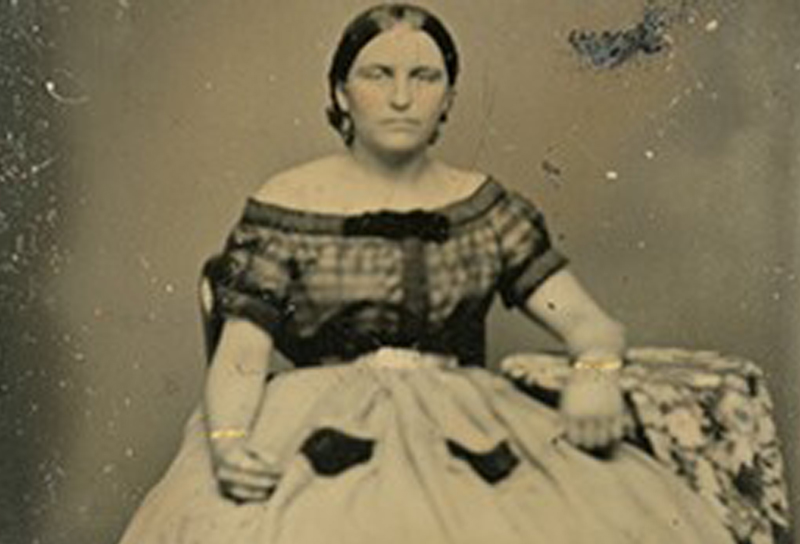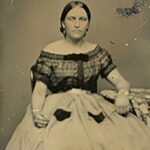
Meet Sarah Armistead, formerly Sarah Williams, formerly Sarah Judge, formally Sarah Craven, also known as the “Mother of St. Petersburg”. In her obituary, she is credited with holding the straws which her then-husband, John Williams, and Orange Belt Railway president, Peter Demens, drew to decide who had the right to name the city they had just founded—a story which later became a legendary coin flip. A story which we now know never happened.
Why would Sarah lie? It’s possible we’ll never know. So maybe the better question is: who was Sarah Armistead anyways? And what gave her the confidence to make claims like that?
Follow the story of Sarah Armistead, published in four monthly installments.
Part Three: Sarah Craven Judge Williams
Around 1880, Sarah Craven Judge, a Canadian-born circus performer, once accused and acquitted of the crime of embezzlement, finds herself widowed. She’s working in Detroit as an actress to support her two children when her son, Robert, takes a job in the real estate office of John C. Williams – the man who will later be known as the Father of St. Petersburg. Within the year, Williams files for divorce from his wife Charlotte, and, within two years, he marries Robert’s mother, our very own Sarah Craven Judge.
The new couple starts to establish a life in Florida on land that John Williams had been trying to farm since the 1870s. They build an impressive home in Tampa, and regularly go back and forth between there and Michigan as they try to establish a plantation in Pinellas. At some point, some of the Williams kids, as well as Sarah’s son, Robert, decide to settle in Pinellas a lot more permanently. The result of this is the first hint that there might be some animosity between the Williams family and the Judge family. In August of 1882, just a month after Sarah and John are said to have been married, John’s son, John R.Williams opens fire on Sarah’s son, Robert. It’s a drive-by shooting, via a one-horse wagon, and it misses, hitting someone named Robert Hodge instead. Apparently, John R. Williams had been acting erratically for a while, and when he was charged, they declared him insane, and he was sent away to an asylum in Chattahoochee. The reason for his attack is never publicized.
Then comes the good bit: the founding of St. Petersburg. If you know anything about the story, you know that in 1887, John Williams and Peter Demens struck a deal: if John provided the land, Peter would bring the Orange Belt Railway to town. If you know a little bit more about it, you know that Peter was practically bankrupt when the deal was made. And if you know a little more than that, you know that he was so broke, that when the deal with John Williams was struck, he was too busy wining and dining creditors up north to be there in person. Instead, the Orange Belt sent a man named Henry Sweetapple. This worked to John and Sarah’s advantage, because Sweetapple was a Canadian, just like Sarah. Reportedly, she and Sweetapple had much to talk about. In later accounts, the negotiation that resulted in the founding of St. Petersburg, is largely attributed to her. Peter Demens gets word from Sweetapple that the deal went through and he tells his creditors, “Just received a report from our Mr. Sweetapple that he succeeded in making an agreement with a certain J.C. Williams…” over what he calls, “a splendid town site.” Construction on the railroad begins, and the rest is history.
Let’s fast forward a little. It’s 1892, four years after the first Orange Belt train, the Mattie, “puffed and belched” its way into St. Pete. St. Petersburg, freshly named and steadily growing, decides to incorporate as a town, and the essentials for a town are a council, a police force, and, of course, a mayor. John Williams throws his hat in the ring, figuring that surely, as the town’s founder, he’ll be elected its first mayor, just as his father had been the first mayor of Detroit. Plus, he’s running on the pro-saloon ticket, and the people of St. Pete have always loved to drink. It’s a sure thing. Until it isn’t. Out of the 31 people who voted, only 10 pick John Williams. Then, in what must have been a swift kick to the gut for a man already on the ground, John’s own son wins a seat on the council, running on the anti-saloon ticket. Enraged, Williams challenged the legality of the election, an effort that ultimately failed.
So, on April 26, 1892, about two months after the election, to put the finest of points on how mad he
was, John C. Williams, Sr. dies, and leaves everybody but Sarah, with nothing. Naturally, this begins one of the largest court cases that Florida had ever seen—at least, at that point. There was, after all, $150,000 on the line. Today, that’s $5.4 million dollars. Eight of the Williams kids banded together to block the will. Their claim? That their father was “in a demented state” when he wrote it, and that Sarah had used “undue influence” to convince him to write it. Furthermore, they claimed that John and Sarah were never even legally married, and therefore she cannot be considered his widow. And indeed, only historian Karl Grismer seems to know the exact date of their marriage.
Then, just to make matters worse, John’s first wife, Charlotte Williams comes out of the woodwork. She claims that at the time of their divorce, John Williams was “unbalanced” and that he had “terrified” her into dropping her case against him in the divorce. So, being so terrified and “ignorant of the law”, she should have a claim to the money as a kind of permanent alimony. Now, this case is pretty important in St. Pete, because most of John’s money is tied up in property. So whoever gets the highest payout will end up owning a large chunk of the property in and around the city. The extensive proceedings of the court case can still be found today in the property records of many areas in St. Pete, if, of course, you go back far enough. When the estate is finally settled in August of 1894, Charlotte is given a flat $5000, and the rest is split in a compromise between Sarah Williams and all of the Williams children. Sarah retained $30,000, which John had given her before he died, and one-third of the $150,000 estate. The rest is divided equally among the eight children.
All of this to say that when Sarah’s second—possibly third—husband dies, she walks away with what would be the equivalent of $2.9 million dollars. This makes her one of, if not the richest woman in town, and one of the largest property owners too.
So what does she do then? Turn around and marry the soon-to-be mayor of course.
Find out what happens next in the fourth and final installment in the life of Sarah Williams Armistead.



